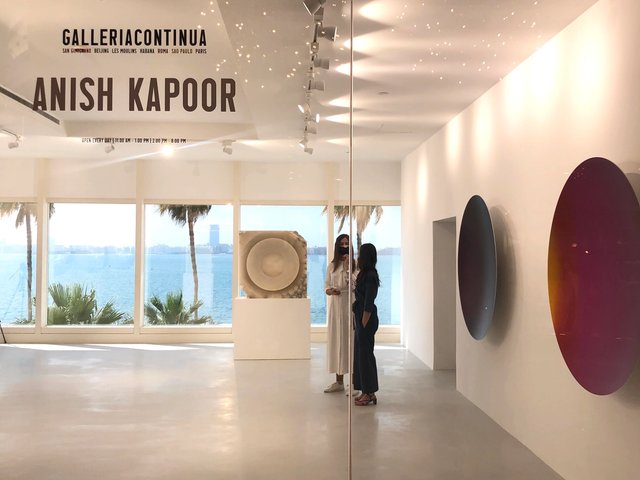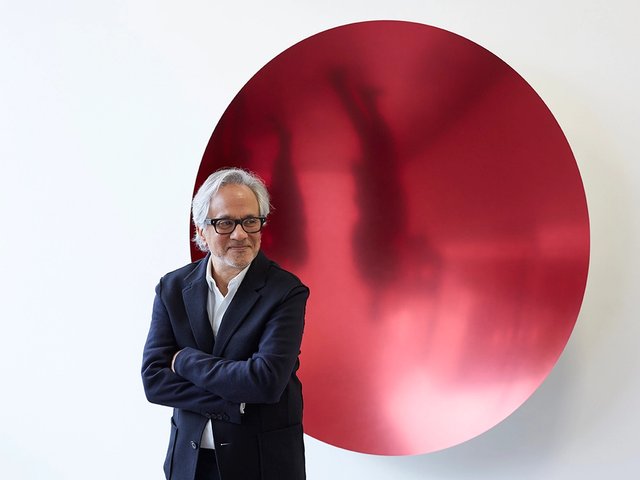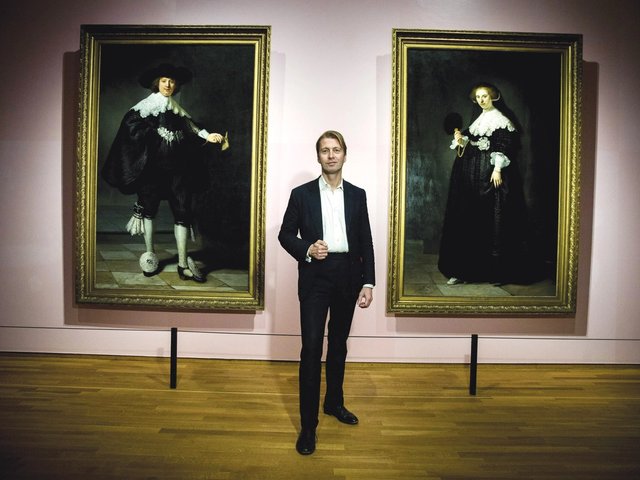The British artist Anish Kapoor unveiled a gory triptych of reliefs in the Rijksmuseum’s Gallery of Honour today (27 November), the Amsterdam museum’s most ceremonial space. Internal Object in Three Parts, which are large-scale works made of silicone, earth and pigment, refer to themes of “violence, trauma and social and political unrest,” according to the Dutch national museum’s press statement. The artist is more direct, telling us that he cannot help thinking of the aftermath of suicide bombings. “We live in such terrible times. The body has always been a site of suffering and pain but now it is a political tool,” he says. “The image of the body splattered across a space—it’s an image I can’t get out of my head.”
Kapoor was invited by Taco Dibbits, the Rijksmuseum’s director of collections, to show the blood-red and sinewy reliefs. Dibbits also suggested hanging them in the Gallery of Honour, which leads to the Night Watch Gallery, where its most famous painting by Rembrandt hangs. “I am now a honorary Dutch citizen,” Kapoor says, adding that it is humbling to have his work hung among Dutch Old Masters.
Dibbits says that Kapoor's work provokes a "physical emotion". They are "overpowering and overwhelming" but he says the dialogue with Rembrandt's late works is logical. "They show great compassion. Rembrandt's work shows great compassion too."
Anish Kapoor & Rembrandt (until 6 March) follows a controversial summer for the artist whose monumental sculpture Dirty Corner was repeatedly vandalised when on display in the grounds of Versailles. The three reliefs now on show in Amsterdam recall a high-impact work by the artist, Shooting into the Corner (2009), a canon that fires red wax, which he installed in another historic space, Versailles’ royal tennis court, the Jeu de Paume. On the eve of the French Revolution members of the Third Estate gathered there to form a National Assembly.





